Fashion Designer CV Template [Example, Templates and Writing Guide]
The Fashion Designer CV template is a sleek and professional resume option explicitly designed for fashion industry professionals. It features a modern layout and carefully chosen fonts and colors to showcase your creativity and style.
This template includes a matching cover letter that complements the CV, providing a cohesive and professional look. Perfect for fashion designers looking to make a bold impression and stand out in the competitive industry.
What is A Fashion Designer?
A fashion designer creates clothes, accessories, and shoes. They combine artistic vision with technical skills to create fashion. Fashion designers must create unique, appealing designs that meet industry standards and target markets.
To become a fashion designer, you need a strong design foundation, an eye for trends, and the ability to turn ideas into garments. You can work for fashion houses, retail brands, or manufacturing companies as a fashion designer. A well-written CV (Curriculum Vitae) should highlight your skills, experience, and creativity.
Fashion Designer Duties and Responsibilities
Fashion designers have diverse responsibilities that encompass every stage of the design process. Some of the key duties and responsibilities of a fashion designer include:
- Conceptualizing Designs: Fashion designers begin by brainstorming and developing concepts for their collections. They draw inspiration from various sources such as art, culture, nature, and current trends.
- Sketching and Designing: Once the concept is finalized, fashion designers create detailed sketches and technical drawings of their designs. These sketches serve as blueprints for the creation of garments or accessories.
- Fabric Selection: Fashion designers carefully choose fabrics and materials that align with their design concepts. They consider factors such as texture, color, and drape to ensure the chosen fabrics enhance the overall aesthetic appeal of the garments.
- Pattern Making: Fashion designers create patterns based on their sketches and designs. Pattern making involves drafting templates that serve as guides for cutting and assembling the fabric pieces.
- Garment Construction: Fashion designers may personally construct prototypes of their designs or collaborate with skilled seamstresses and tailors to bring their ideas to life. They oversee the entire garment construction process to ensure the final product reflects their original vision.
- Trend Research: Staying up-to-date with the latest fashion trends is crucial for fashion designers. They continuously research and analyze fashion trends, attending fashion shows, reading fashion magazines, and exploring online resources to keep their designs fresh and relevant.
- Collaboration and Communication: Fashion designers frequently collaborate with other professionals in the industry, such as stylists, photographers, models, and fashion buyers. Effective communication skills are essential to convey their design concepts and work harmoniously with others.
- Quality Control: Fashion designers maintain a keen eye for detail and quality. They inspect finished garments to ensure they meet their standards and make necessary adjustments or modifications as required.
How to Showcase Your Textile Knowledge in a Fashion Designer CV?
Effectively showcasing your textile knowledge in a fashion designer’s CV can greatly enhance your chances of securing a position in the industry. Here are some tips to highlight your textile expertise and stand out from other candidates:
- Highlight Your Textile Design Skills and Experience:
In the work experience section of your CV, emphasize your textile design skills and experience. Describe specific projects or roles where you worked extensively with textiles, such as fabric sourcing, textile manipulation techniques, or textile design development.
Example:
Collaborated with textile suppliers to source sustainable and high-quality fabrics for each collection.
Developed original textile designs through hand-painting, digital printing, and fabric manipulation techniques. - Use Measurable Achievements:
When describing your textile design skills and experience, incorporate measurable achievements to quantify your impact and showcase your proficiency. This provides concrete evidence of your abilities and adds credibility to your claims.
Example:
Increased fabric cost savings by 15% through strategic negotiation with textile suppliers.
Developed and implemented a streamlined textile selection process, reducing design-to-production time by 20%. - Utilize Industry-Specific Keywords and Phrases:
Tailor your CV by incorporating industry-specific keywords and phrases related to textile design. This helps to optimize your CV for applicant tracking systems (ATS) and demonstrates your familiarity with the field.
Example:
Proficient in textile engineering, fabric selection, and textile printing techniques.
Extensive knowledge of sustainable textiles and their environmental impact. - List Relevant Coursework or Certifications:
If you have completed any coursework or obtained certifications specifically related to textile design, include them in a dedicated section of your CV. This highlights your commitment to continuous learning and professional development in the field.
Example:
Coursework: Textile Design and Development, Fabric Science and Analysis, Advanced Textile Printing Techniques
Certification: Certified Textile Designer (CTD) - Use Bullet Points to Describe Your Textile Experience:
When detailing your textile-related experience, use bullet points to present information in a concise and organized manner. This makes it easier for recruiters to scan your CV and quickly grasp your textile expertise.
Example:
Conducted extensive research on textile trends and incorporated innovative fabric combinations in design projects.
Collaborated with pattern makers and sample machinists to ensure accurate execution of textile designs. - Include Relevant Technical Skills:
In a separate skills section, highlight any technical skills that are relevant to textile design. This can include proficiency in pattern making, clothing technology, or textile analysis software. These skills demonstrate your versatility and technical proficiency in the field.
Example:
Technical Skills: Pattern making, Clothing Technology, Textile Printing Software (e.g., NedGraphics)
Key Sections to Highlight in a Fashion Designer’s CV
- Personal Information: Include your full name, contact details, and relevant professional social media handles.
- Objective or Professional Summary: Write a concise statement that highlights your career goals and unique strengths as a fashion designer. Customize it for the specific job or company you’re applying to.
- Education: Outline your educational background, including degree, major, and relevant coursework or achievements.
- Professional Experience: List your relevant job experience in reverse chronological order, including responsibilities, accomplishments, and important projects.
- Skills: Highlight your technical and soft skills that are relevant to fashion design, showcasing your proficiency and capabilities.
- Portfolio: Include a link to your online portfolio or attach samples of your design work to visually demonstrate your aesthetic and craftsmanship.
- Awards and Recognition: Highlight any awards or industry recognition you have received as a fashion designer.
- References: Provide the names and contact information of professional references who can vouch for your skills and character.
Dos and Don’ts in Fashion Designer CV
To create an effective fashion designer CV, keep the following dos and don’ts in mind:
Dos:
- Do tailor your CV to match the specific job requirements and company culture.
- Do use action verbs to describe your accomplishments and responsibilities (e.g., designed, developed, collaborated).
- Do proofread your CV thoroughly to ensure it is free of grammatical errors and typos.
- Do keep your CV concise and focused, aiming for a maximum length of two pages.
- Do include quantifiable achievements whenever possible (e.g., “Increased sales by 20% through the introduction of a new design collection”).
Don’ts:
- Don’t include irrelevant information or hobbies that are not related to fashion design.
- Don’t use excessive jargon or industry-specific terminology that may be unfamiliar to recruiters.
- Don’t provide false information or exaggerate your skills and experience.
- Don’t rely solely on generic templates. Customize your CV to make it unique and reflective of your personal brand as a fashion designer.
Design and Formatting Tips for Fashion Designer CV
The design and formatting of your fashion designer CV play a crucial role in creating a visually appealing and professional document. Consider the following tips:
- Choose a Clean and Readable Font: Choose a legible and clear typeface, such as Arial, Calibri, or Helvetica, to ensure effortless readability.
- Use Proper Headings: Employ consistent and distinct headings (e.g., bold and slightly larger font) for each section to create a well-organized CV.
- Utilize Bullet Points: Break down your responsibilities, skills, and achievements into concise bullet points to enhance readability and make your CV scannable.
- Incorporate White Space: Leave ample white space around the text and between sections to create a clean and uncluttered appearance.
- Consider Visual Elements: Incorporate subtle design elements, such as lines or icons, to add visual interest without overwhelming the content.
- Keep it Consistent: Maintain consistent formatting throughout your CV, including font sizes, bullet styles, and margins.
- Save as PDF: Save your CV as a PDF to ensure it retains its formatting across different devices and operating systems.
Fashion Designer Cover Letter: Design and Formatting Tips
When formatting your fashion designer cover letter, it’s essential to create a visually appealing and professional document highlighting your skills and experience. Here are some tips and tricks to help you format your cover letter effectively:
- Use a professional and clean layout: Choose a clean and easy-to-read font, such as Arial, Calibri, or Times New Roman. Maintain a font size between 10 and 12 points throughout the letter.
- Include your contact information: Place your name, address, phone number, and email address at the top of the cover letter. Align it to the left or right side of the page.
- Add the date and recipient’s information: Include the current date, then the recipient’s name, title, company name, and address, following your contact information. Use the correct salutation, such as “Dear Mr. or Mrs. [Last Name].”
- Write a compelling introduction: Begin your cover letter with a strong opening paragraph that grabs the reader’s attention. Mention the specific position you’re applying for and briefly explain why you’re interested in the role and the company.
- Structure your content with paragraphs: Divide your cover letter into three to four paragraphs. Use each paragraph to focus on a specific aspect of your experience, skills, or achievements. This structure helps maintain clarity and makes it easier for the reader to follow.
- Showcase your relevant experience and skills: In the body of the cover letter, emphasize your pertinent expertise, abilities, and achievements that position you as a compelling applicant for the fashion designer role. Use bullet points to draw attention to specific achievements or qualifications.
- Tailor your letter to the company and role: Research the company and position you’re applying for, and customize your cover letter accordingly. Show how your skills align with their needs and demonstrate your enthusiasm for their brand or fashion aesthetic.
- Use concise and persuasive language: Write clearly, concisely, and persuasively. Avoid lengthy paragraphs and make every word count. Use action verbs and specific examples to demonstrate your abilities.
- End with a strong closing paragraph: In your final paragraph, reiterate your interest in the position and the company. Express your enthusiasm for the opportunity to contribute to their success. Express gratitude to the recipient for evaluating your application and conclude with a formal closing, such as “Sincerely” or “Best regards.”
- Proofread and edit: Before sending your cover letter, proofread it for grammatical or spelling errors. Ensure the formatting is consistent and the document looks polished and professional.
FAQs
How to describe your knowledge of different types of fabrics in a fashion designer CV?
In your fashion designer CV, describe your knowledge of different fabric types by highlighting your familiarity with textiles such as silk, cotton, wool, and synthetic materials. Mention your understanding of their properties, uses, and how you have successfully incorporated them into your designs. Showcase your expertise in selecting appropriate fabrics for various garments or design concepts.
What type of work experience should I include in my Fashion Designer CV?
Include work experiences in your Fashion Designer CV that directly relate to the field, such as internships at fashion houses, design studios, or collaborations with industry professionals. Highlight responsibilities like trend research, garment construction, sketching, and client collaborations. Emphasize experience in areas like pattern-making, fabric sourcing, and any notable achievements or projects relevant to fashion design.
What are some examples of textile-related achievements to include in a fashion designer CV?
Highlight your textile-related achievements on your CV as a fashion designer, such as finding unusual fabrics for one-of-a-kind designs, introducing novel textile processing methods, or making elaborately manipulated clothes. Emphasize every time you used your knowledge of sustainable or eco-friendly fibers in your creations, or showed off your skills in dyeing, printing, or embellishing textiles.
Should I include non-fashion-related work experience in my Fashion Designer CV?
While prioritizing fashion-related work experience in your Fashion Designer CV is ideal, including non-fashion-related work experience can be valuable. Highlight transferable skills gained, such as project management, communication, or problem-solving. Connect those skills to how they contribute to your success as a fashion designer, demonstrating versatility and a well-rounded skill set.
Which Fashion Designer skills are most important to highlight in a resume?
Fashion designers must demonstrate proficiency in design software (e.g., Adobe Creative Suite), trend research and forecasting, sketching and illustration, pattern-making and garment construction, textiles and materials, communication, and teamwork. Customize your skills area to meet job requirements and highlight your fashion industry expertise.
INCLUDES:
- Cover Letter Template (can also use as a Thank You letter)
- Microsoft Word (.docx) files
- Apple Pages (.pages) files
- Photoshop (PSD) Files
- Illustrator (EPS) Files
- Detailed Instructions file
- A4 Paper Size Included
- Links to free fonts used
- 24/7 hours Fast and friendly customer service
Share Now!
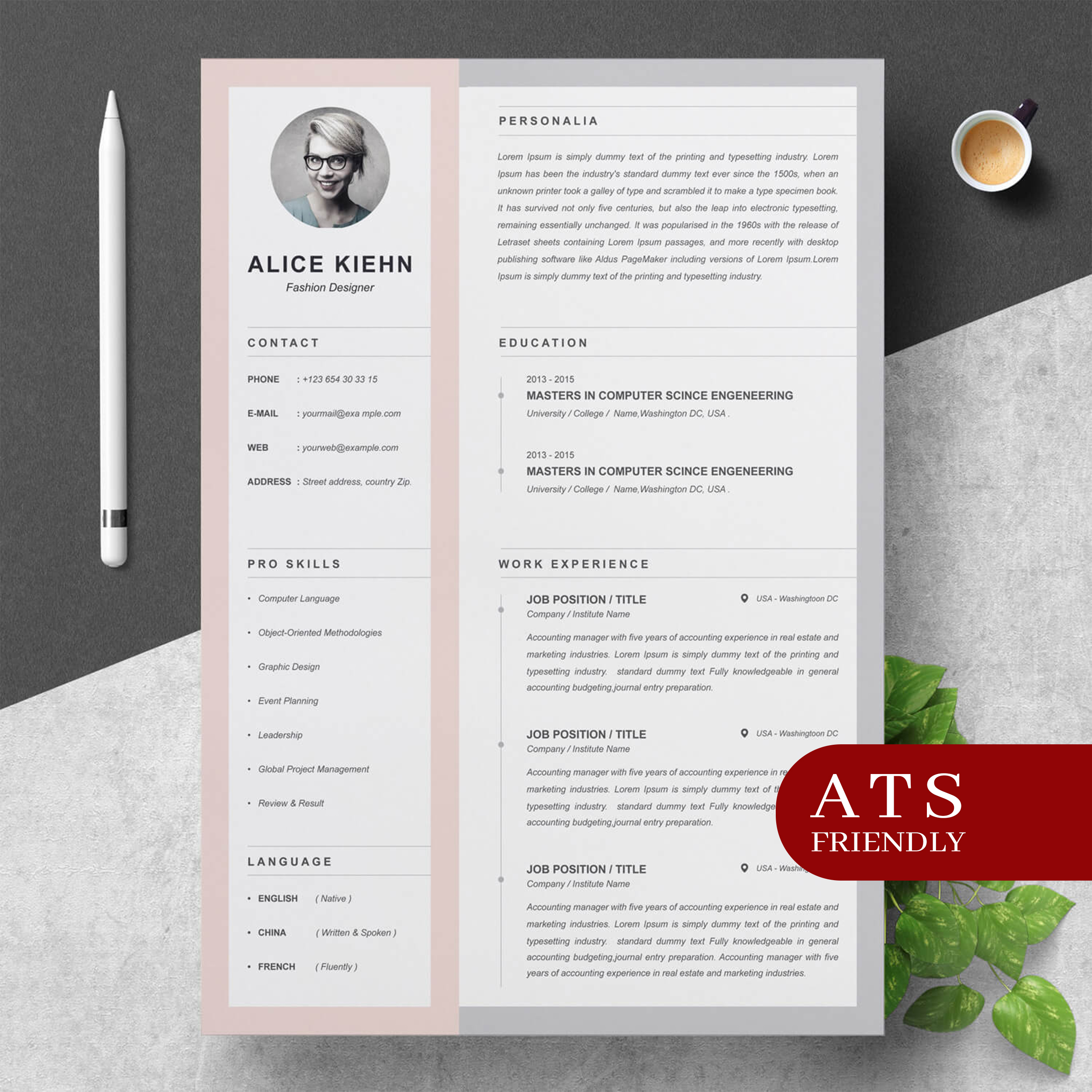
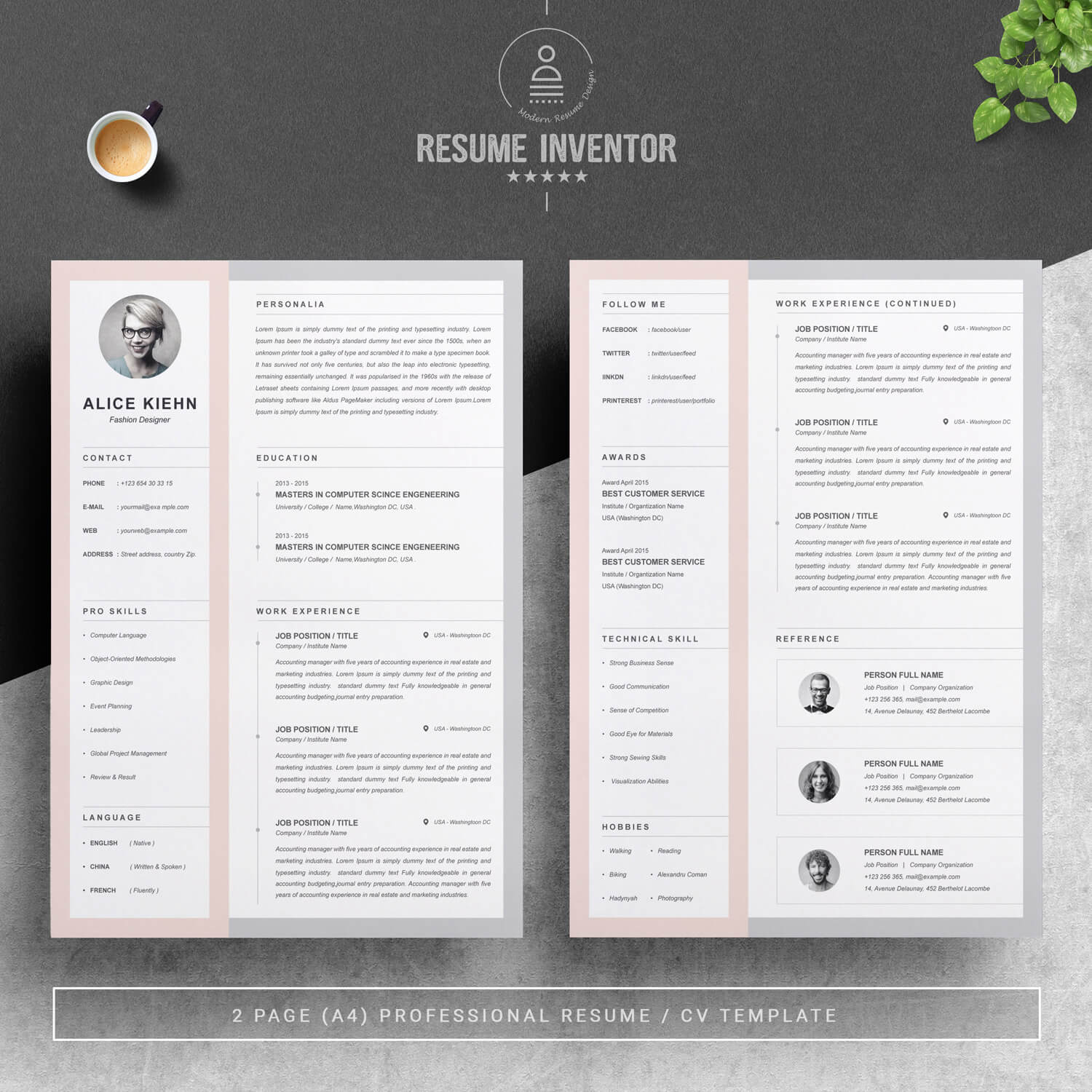
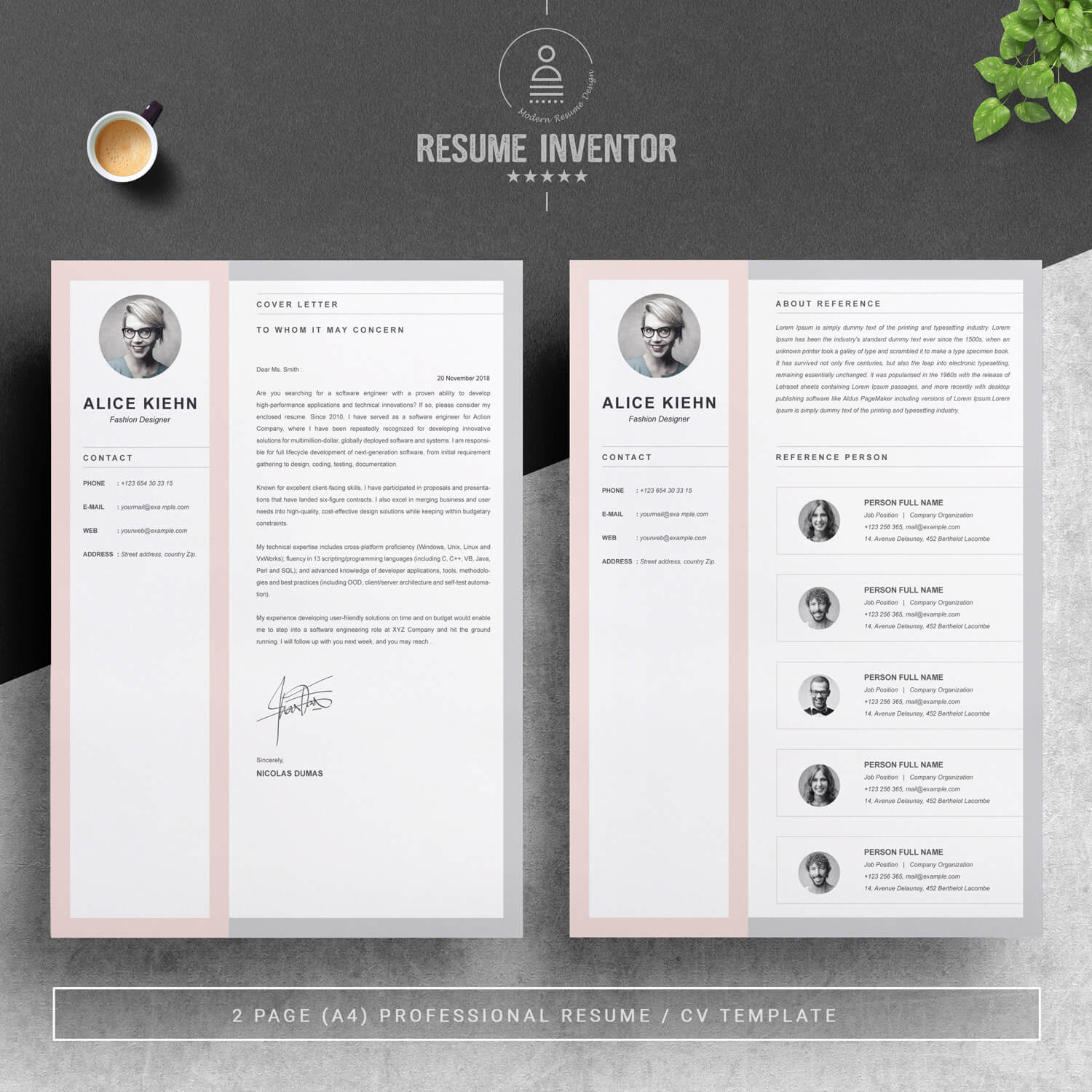
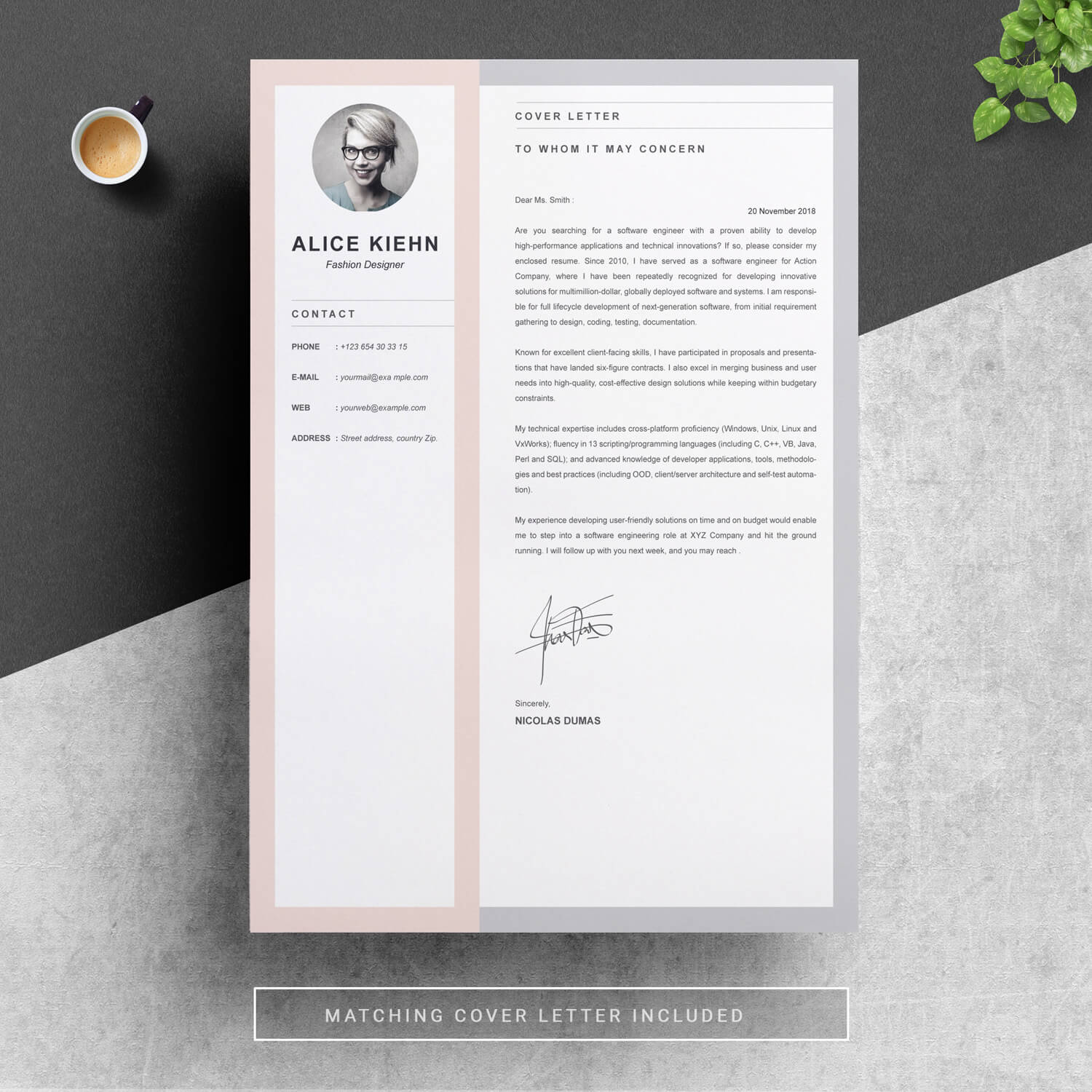
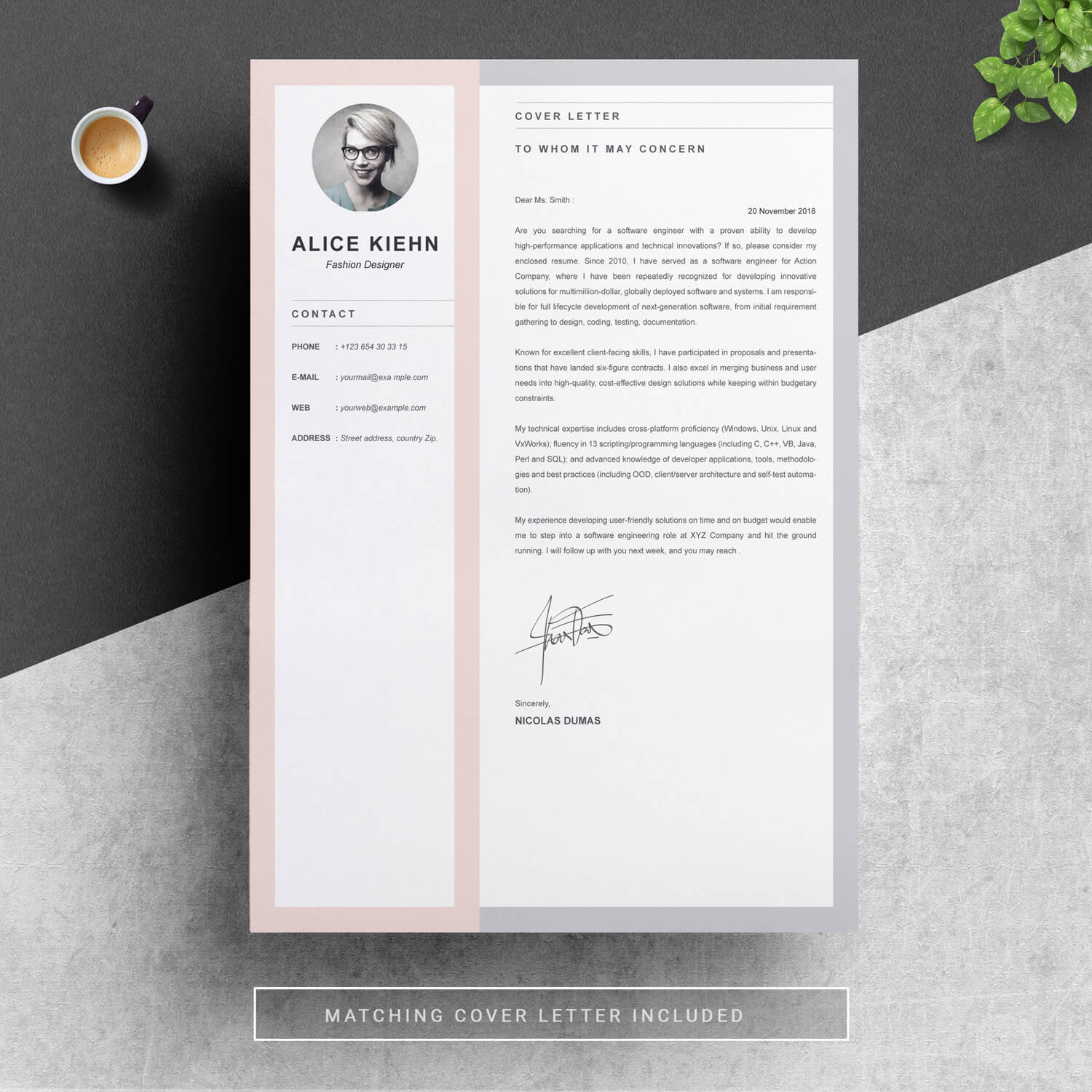
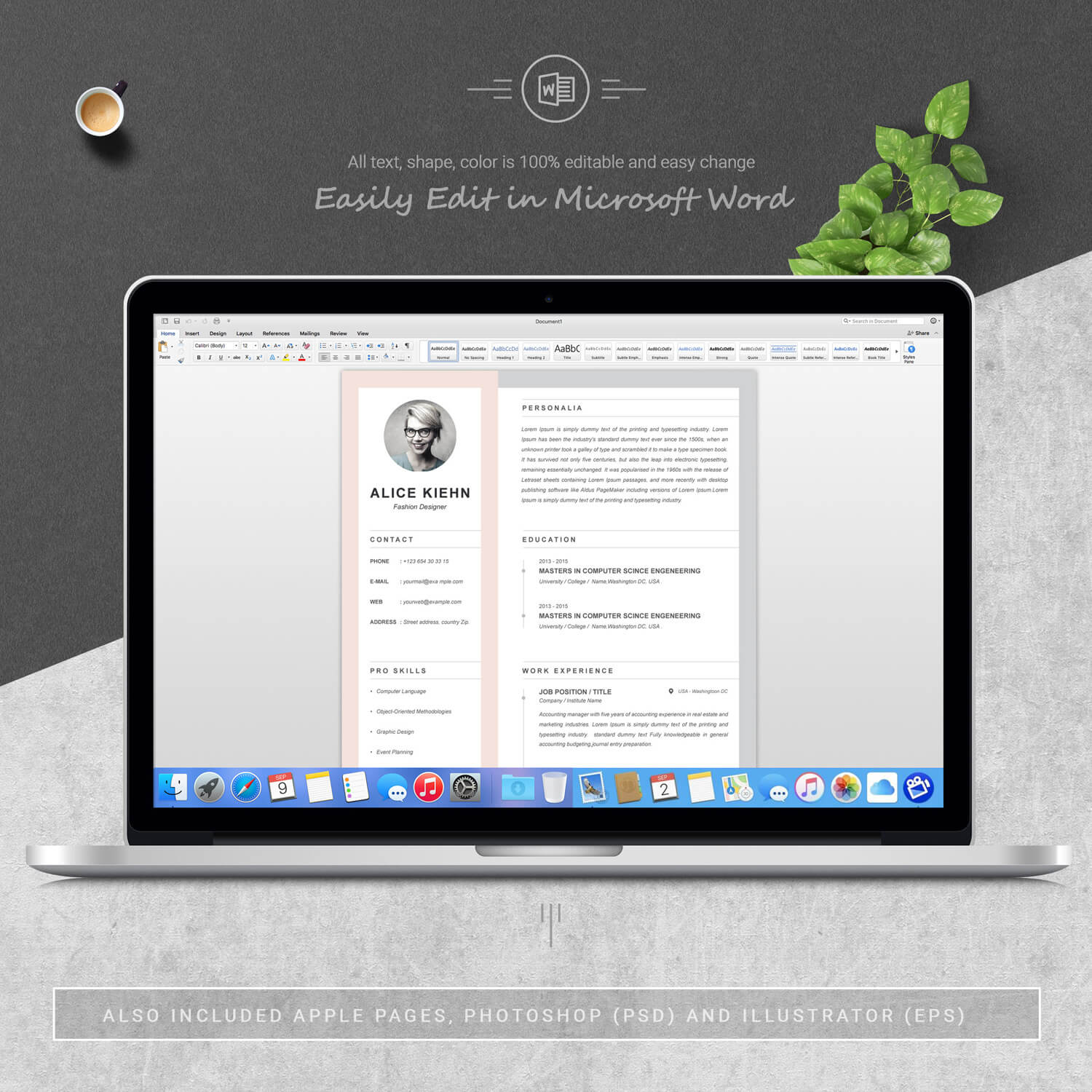
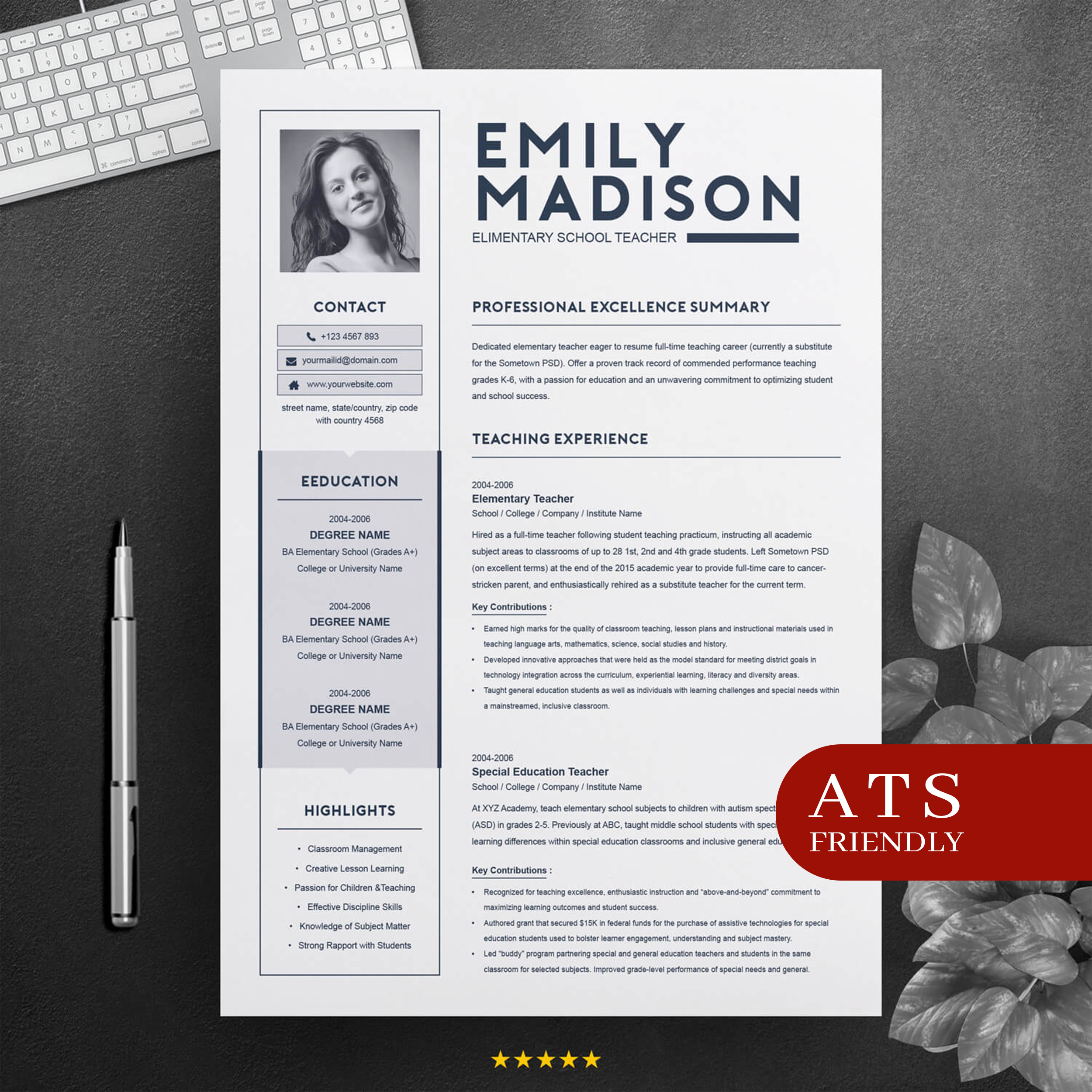
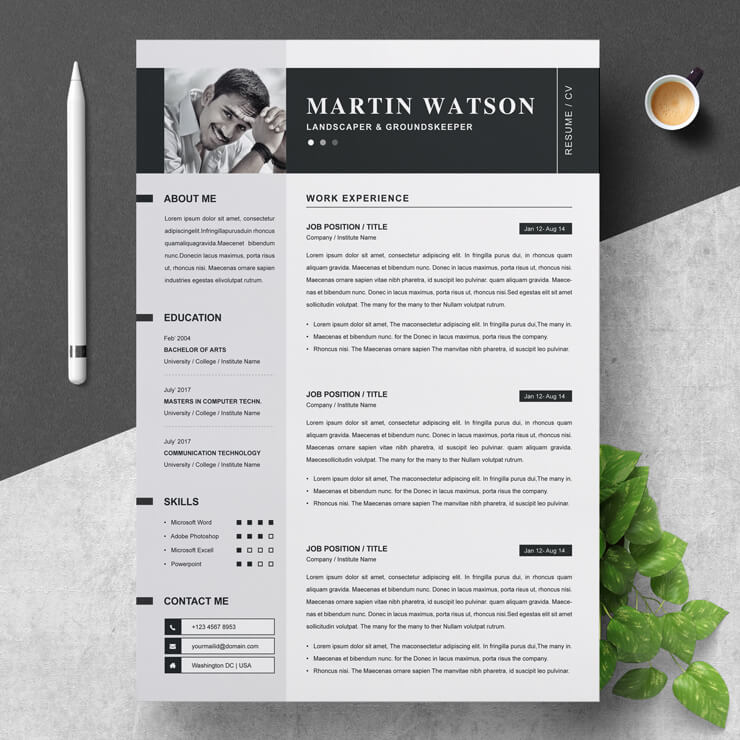
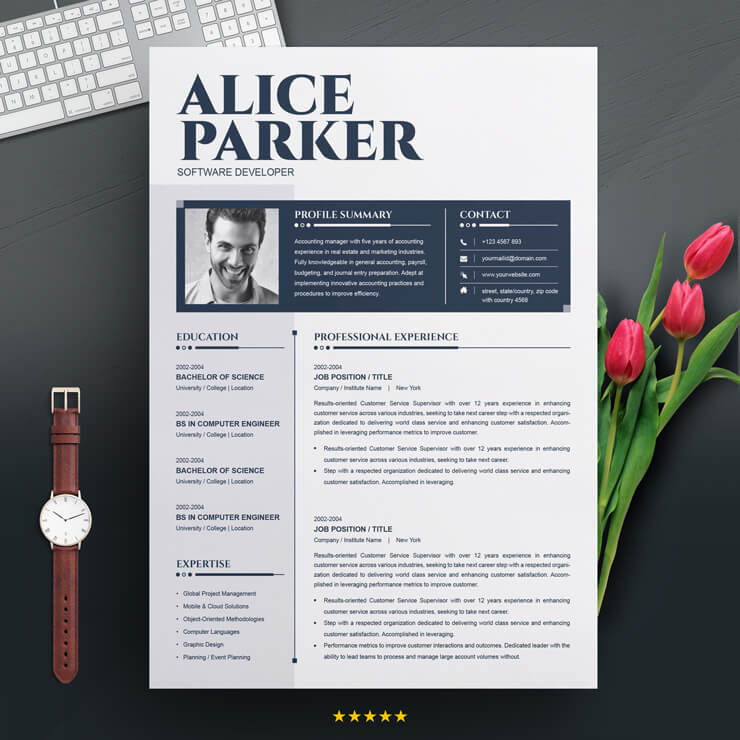
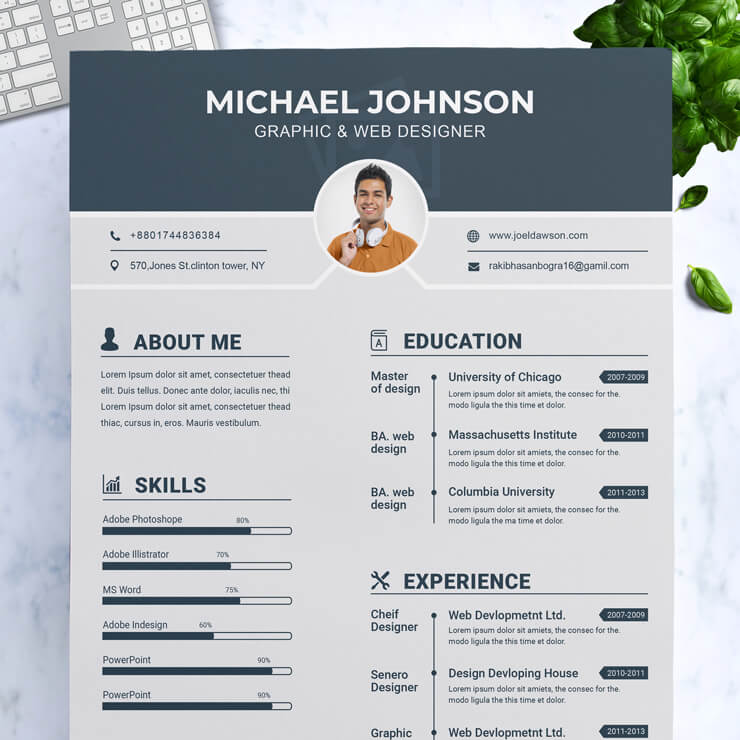
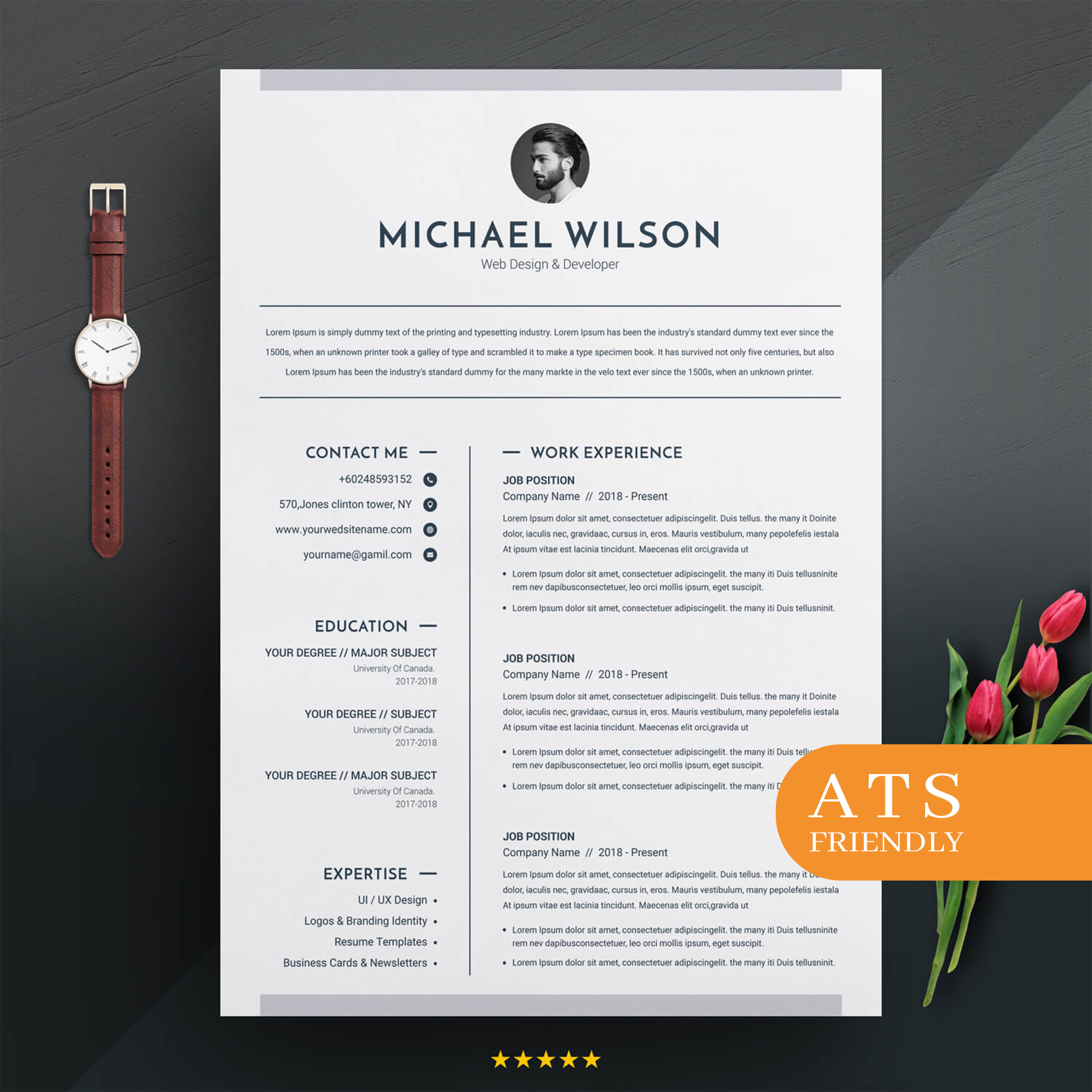
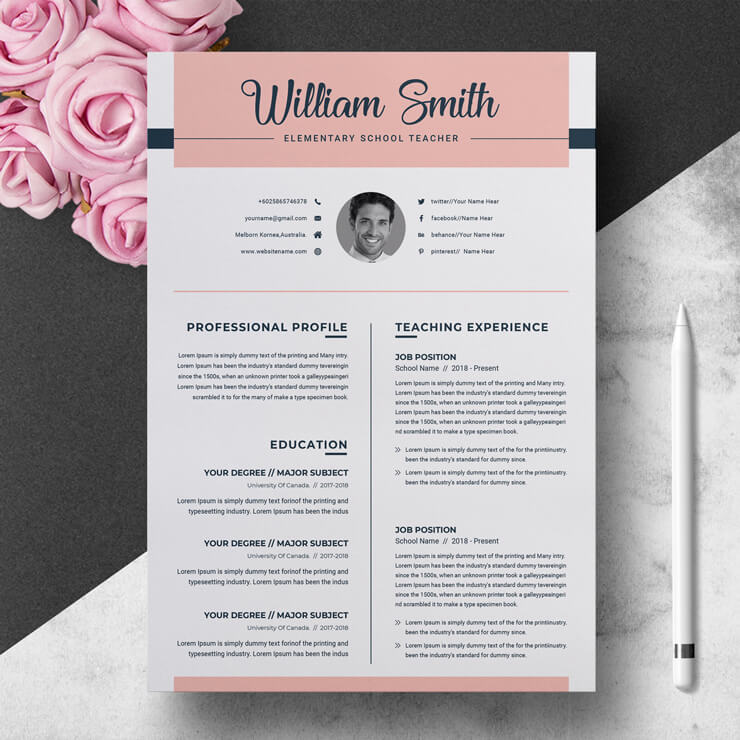
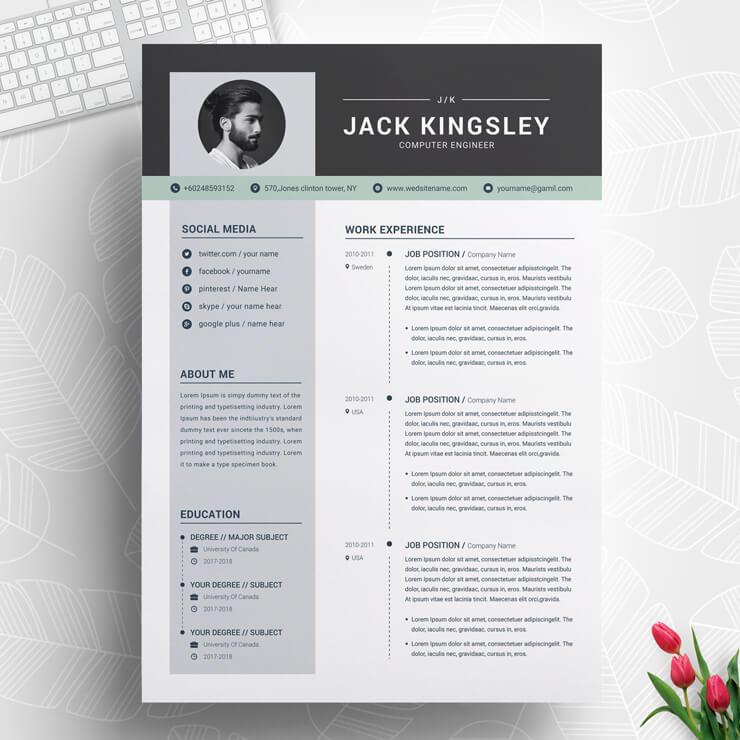
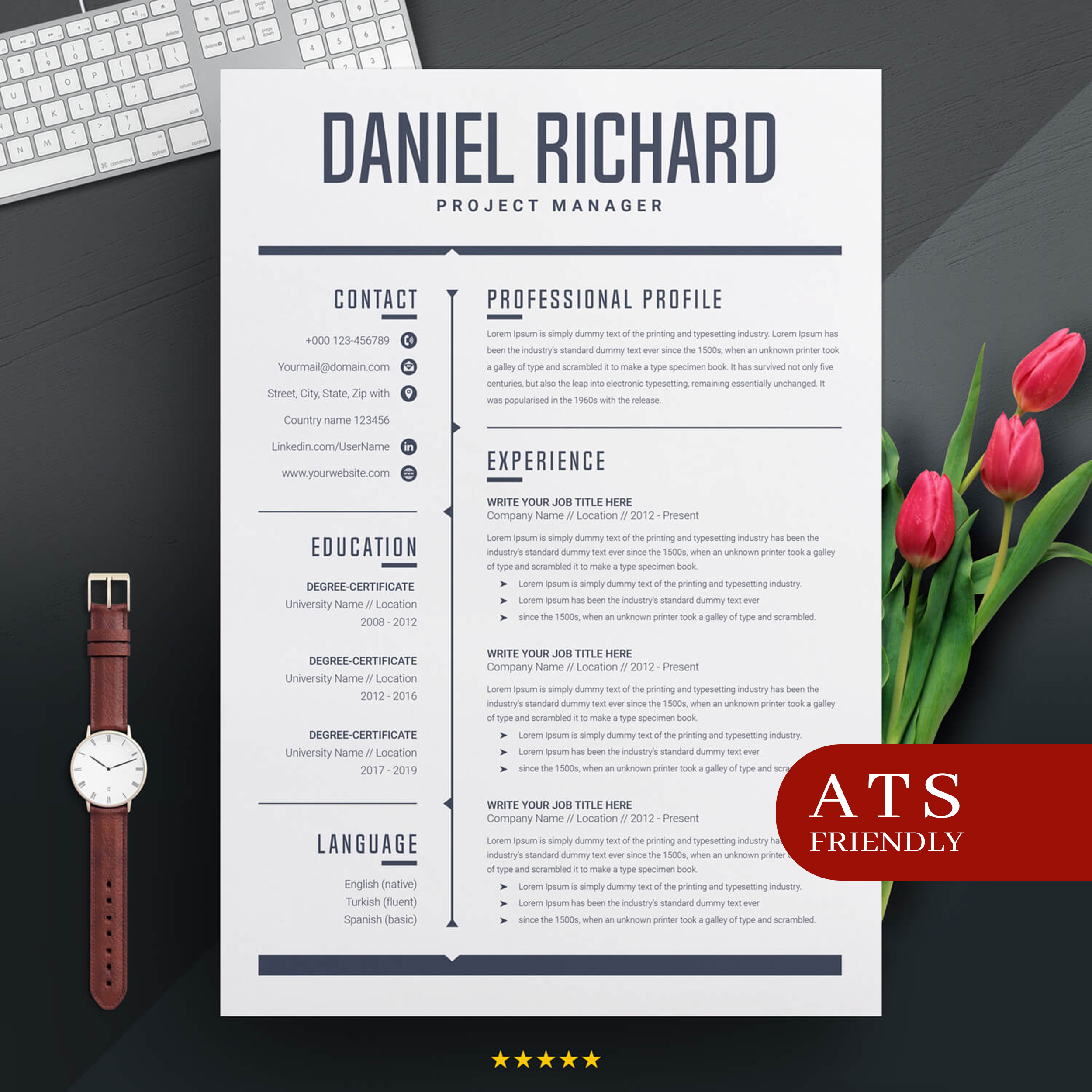
You must log in and be a buyer of this download to submit a review.
Leave a reply Cancel reply